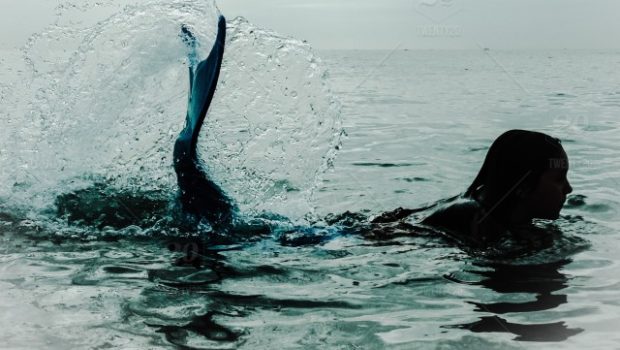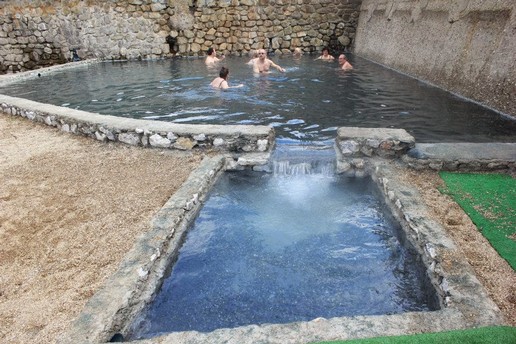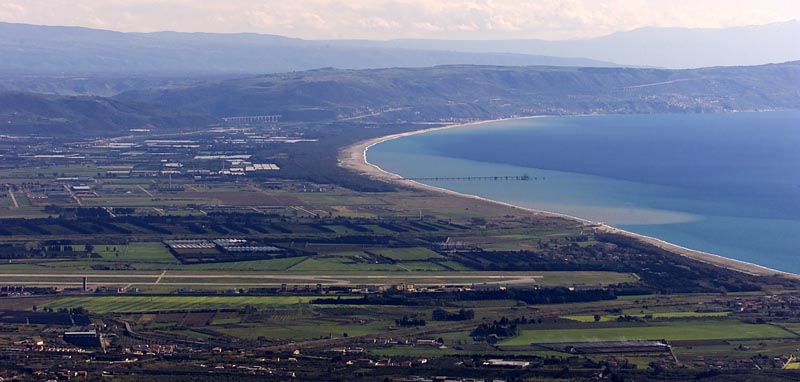Aunt siren are evoked between myths and legends that wrap around the Calabria since ancient times, especially that of Ligea. She was the youngest of her sisters Partenope and Leucosia, who according to the myth, for not having saved the playmate Persephone from the kidnapping, when Hades god of the underworld kidnapped her while they were picking flowers, dragging her into the Avernus. All three were turned into mermaids by her mother, Demeter, and condemned to solitude.
It is said that Ligea, seeing Partenope throw herself off a cliff and Leucosia disappear into the depths of the sea in search of death, plunged herself into a terrible sea storm, letting herself be carried away by the waves, and destiny led her adrift until Gulf of Sant'Eufemia.
Here, found by sailors on the bank of the Okinaros, the current Bagni river, she was buried on the small gravel island, elected as their protector, and a monument was erected in her honor.

Archeology, sirens, history and legend
Since then the reverence for the unfortunate sea creature has been great. In that remote era, mermaids were represented with the body of a bird and the head of a woman, or as a girl in the upper part and in the lower part as a bird.
Its myth, sung by poets, is undoubtedly linked to the existence of the ancient city of Terina, in the Calabrian plain of Sant'Eufemia, recently unearthed in the area called Jardini di Renda, south of Caronte, not far away, filled in by the floods of the Bagni, after its destruction by Hannibal.
In ancient times, the siren would have represented the very personification of the city of Terina near the rapid currents of the Ocinaro and according to legend, this goddess of water with a horned forehead, with its waters would have wet the tomb, wiping the bust of the winged sea maiden.

In the study of archaeologists the myth of the siren venerated, depicted with the bust of a woman, the bare arms and the body of a bird with tail and wide wings, in various coins found in terine, sitting on a stone while playing with a ball, or while filling an amphora with the water that flows from the mouth of a lion, thus indissolubly united to the territory. Ligea also often appears in isolated statues and in reliefs adorned with tombs, usually while playing the zither, or in painted vases, mosaics, paintings and Roman sarcophagi.
Spas, fertile lands and agritourism
We are faced with a vast and fertile alluvial plain, the third largest in Calabria. It lies in the center of the Tyrrhenian coast and has a mostly triangular shape. In 1926 the "Bonifica S. Eufemia Society"To create a project for the reclamation of the plain itself. The project presented was promptly approved and the area, although smaller than the initial project, was eventually reclaimed.
Some hilly and mountainous parts that slope gently, and which extend up to Monte Mancuso, border and are part of the Piana di Sant'Eufemia. Fertile areas extend with important cultivations of vines, strawberries, olive trees, citrus fruits, wheat and much more, and which have also allowed this splendid triangle of Italy to give a not inconsiderable impulse to the development in the agritourism sector.

It is not difficult at certain times of the year to find yourself immersed in the smell of the orange blossom that envelops you with its intense scent and that cradles tourists, also thanks to the sea on which you overlook, which is undoubtedly one of the clearest in Italy. . We also find, relatively to the Bagni stream, famous for its warm mineral sulphurous waters and muds, the famous and ancient Terme di Caronte, which flow from the spring waters of the mountain Reventino. The locals, on their own initiative, have created a thermal pool open to all and anyone can regenerate themselves in this little corner of paradise. In this alluvial plain as mentioned above, lie the ruins of the ancient Greek city of Terina so for tourists there is more than one reason to relax between archeology, wellness and nature. The climate of this area is like for most of the Mediterranean cities, generally mild and temperate and invites for pleasant holidays.





